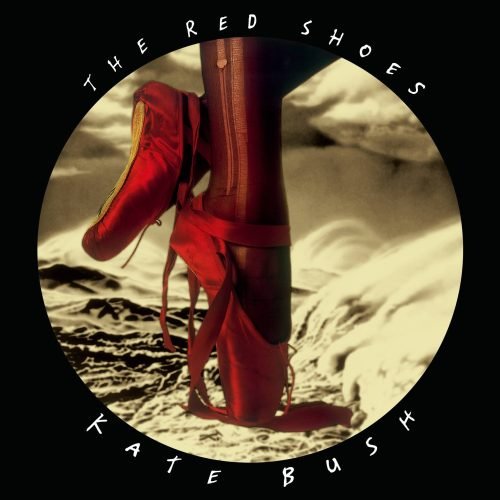In the lush tapestry of Kate Bush’s illustrious career, “The Red Shoes,” released in 1993, emerges as a captivating chapter that both diverges and converges with the threads of her previous works. Situated within the artist’s discography, this album marked Bush’s seventh studio venture, arriving four years after the ethereal landscapes of “The Sensual World.” “The Red Shoes” was not merely a continuation of Bush’s avant-garde approach to music but a bold exploration that ventured deeper into the realms of pop, rock, and folk, all while retaining the idiosyncratic elements that define her artistry.
This period in the broader music landscape saw artists increasingly experimenting with digital production techniques and genre fusion, a trend Bush embraced while ensuring her distinctive voice remained the nucleus of the album. The project thereby stands as a unique confluence of innovation and tradition, setting it apart from both its predecessors and contemporaries.
Artistic Intentions
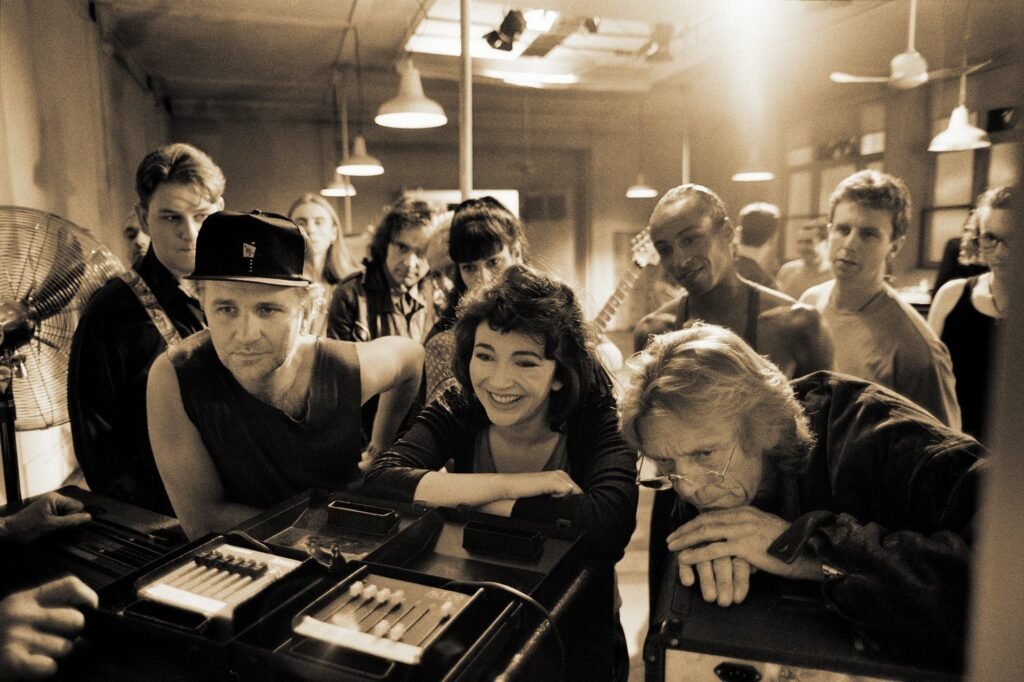
Artistic intentions for “The Red Shoes” were multifaceted, drawing inspiration from the 1948 Powell and Pressburger film of the same name, which tells a story of obsession, creativity, and sacrifice. Bush’s rendition mirrors these themes, delving into the complexities of love, grief, and the relentless pursuit of artistic perfection. The album is imbued with a sense of personal urgency and introspection, possibly reflecting Bush’s own experiences in the music industry and her life at the time. Interviews and album notes suggest that Bush sought to create a work that was both deeply personal and universally resonant, stripping back some of the more opaque layers of her previous releases to reveal a rawer, more direct emotional landscape.
“The Red Shoes was the first album to be recorded for the CD format rather than vinyl. It really affected how I thought about the shape of the album.”
Kate on The Red Shoes
“The Red Shoes” thus stands as a testament to Kate Bush’s enduring artistry and her willingness to navigate the precipice of creative innovation and personal expression. In doing so, it deepens existing themes in her discography while also charting new territories in sound and substance, embodying the artist’s intentions to forge connections with her audience through shared human experiences and emotions.
Sonic Exploration

“The Red Shoes” is a sonic tapestry rich in texture and depth, showcasing Kate Bush’s mastery over her musical domain. The production quality of the album oscillates between the pristine and the purposefully unpolished, creating a sound that is as varied as the emotional landscapes Bush explores within its tracks. This dichotomy serves the album’s thematic concerns beautifully, reflecting the raw intensity of human emotion and the polished performance of artistry, much like the contrasting worlds of reality and performance depicted in the film that inspired the album’s title. The production, led by Bush herself, alongside collaborators such as Eric Clapton, Jeff Beck, and Prince, presents a clarity of sound that allows each musical element to shine while still embracing moments of lo-fi warmth that add to the album’s deeply personal feel.
Musical Arrangements
Musically, “The Red Shoes” is an exploration of vast and varied landscapes. The arrangements are complex, layering traditional rock instrumentation with more eclectic elements like the Uilleann pipes and the didgeridoo, creating soundscapes that are both expansive and intimately detailed. Bush’s vocals remain the focal point, with her ability to convey a wide range of emotions, from the haunting to the ecstatic, proving central to the album’s impact. Her innovative use of vocal arrangements—often layering her voice in intricate harmonies or juxtaposing spoken word with singing—adds a rich texture and depth to the album. One particularly memorable arrangement is found in “And So Is Love,” where the interplay of guitar and vocals paints a nuanced sonic picture of love’s complexities.
Genre Elements
Genre-wise, “The Red Shoes” weaves through pop, rock, folk, and elements of world music, creating a blend that is difficult to categorize but unmistakably Kate Bush. This refusal to adhere strictly to one genre, instead embracing a fluidity that allows for a more authentic expression of the album’s themes, is one of Bush’s hallmarks. The album’s genre-blending is not just for show; it serves a deeper purpose, mirroring the thematic exploration of art’s power, the pain of loss, and the complexities of love. Songs like “Rubberband Girl” offer a more accessible pop-rock vibe, while “The Song of Solomon” draws from more traditional folk sounds, showcasing Bush’s versatility and willingness to experiment.
Lyrical Analysis
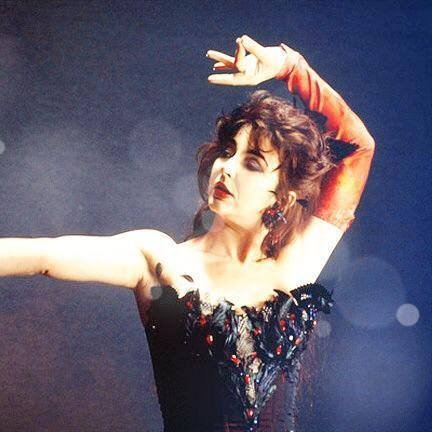
Kate Bush’s “The Red Shoes” is a lyrical odyssey that traverses the realms of love, loss, artistic creation, and the intricate dance between the personal and the performative. The album, rich in narrative and metaphor, weaves a complex tapestry of themes and messages that are as deep and varied as the musical compositions themselves.
Central to the album is the theme of the consuming nature of love and the sacrifices one makes for art, inspired by the Hans Christian Andersen fairy tale and the 1948 film that shares its name with the album. This motif of the red shoes, representing uncontrollable passion and creativity, recurs throughout the album, serving as a powerful symbol for the double-edged sword of artistic dedication. Bush explores these themes through storytelling that is both direct and allegorical, allowing listeners to find layers of meaning within the lyrics.
The lyrical depth of “The Red Shoes” showcases Bush’s exceptional skill as a songwriter. Her lyrics oscillate between straightforward storytelling and abstract, poetic imagery, giving the album a rich textual landscape that invites exploration and interpretation. For instance, “Lily” delves into spiritual protection with vivid imagery, while “Moments of Pleasure” offers a poignant, reflective narrative on the people who have touched Bush’s life, demonstrating her ability to navigate complex emotional terrains with elegance and depth.
Emotional Impact
The emotional impact of the album’s lyrics is profound, with Bush’s storytelling evoking a spectrum of human emotions. Songs like “This Woman’s Work,” a holdover from her previous album that finds a new context here, delve into vulnerability and the anticipation of loss, stirring deep empathy and sorrow. Meanwhile, “Rubberband Girl” captures the resilience and joy in embracing life’s ups and downs, providing a counterbalance to the album’s more contemplative moments. Bush’s ability to convey nuanced emotional experiences through her lyrics is unparalleled, making “The Red Shoes” an emotionally resonant work that engages listeners on multiple levels.
Through its lyrical content, “The Red Shoes” invites listeners into a reflective journey, pondering the complexities of love, the pain of loss, and the relentless pursuit of artistic authenticity. Bush’s use of recurring motifs and her poetic, layered approach to songwriting create a lyrical depth that enriches the album’s sonic exploration. The emotional landscape she crafts is vast and varied, offering moments of intense empathy, joy, sadness, and contemplation, ultimately leaving a lasting impact on the listener.
Cohesion and Flow

“The Red Shoes” by Kate Bush is a masterclass in the art of album construction, where each track serves as a brushstroke in a larger painting, contributing to a portrait of emotional and thematic depth. The flow and cohesion of the album are testament to Bush’s meticulous attention to detail, not just as a songwriter and performer, but as a storyteller weaving a narrative that extends beyond the confines of individual songs.
Track Progression
Track progression throughout the album is thoughtfully curated, creating a journey that ebbs and flows with a natural grace. Starting with the energetic “Rubberband Girl,” Bush invites listeners into a world that balances between resilience and vulnerability, setting the stage for the exploration of more introspective themes. The transition between songs like the introspective “Moments of Pleasure” and the hauntingly beautiful “Top of the City” illustrates a keen sense of emotional progression that is both subtle and profound. The album moves through different stages of grief, love, and artistic passion, culminating in the reflective and somber “You’re the One,” which feels like an emotional and thematic resolution to the narrative arc.
Thematic Consistency
Thematic consistency is another cornerstone of “The Red Shoes,” with motifs of love, loss, creativity, and transformation interwoven throughout the album. These themes are not just revisited but are explored from different angles and through various musical styles, from the folk-inspired “The Song of Solomon” to the more pop-oriented “Constellation of the Heart.” Despite this stylistic range, the album never feels disjointed. Instead, the varied musical landscapes enhance the thematic exploration, providing different lenses through which to examine the core concepts that Bush presents.
Moreover, the album maintains a consistent emotional tone, one that is reflective and deeply human. Even as it traverses through moments of joy, despair, and introspection, there is a sense of coherence in the emotional experience offered to the listener. This is achieved through Bush’s vocal delivery, lyrical storytelling, and the careful arrangement of tracks, which together maintain a seamless narrative and emotional flow.
While “The Red Shoes” is rich in diversity, both musically and thematically, it never strays from its core narrative and emotional essence. The album stands as a cohesive work, with each track contributing to a larger, more complex picture. The deliberate pacing and thoughtful track progression ensure that listeners are taken on a coherent journey, making “The Red Shoes” not just a collection of songs, but a unified artistic statement. The coherence of the album, both in its thematic consistency and emotional resonance, is a testament to Kate Bush’s genius, solidifying “The Red Shoes” as a pivotal work in her discography.
Standout Tracks and Moments

In the rich mosaic of “The Red Shoes,” certain tracks shine particularly bright, standing out for their innovation, emotional depth, and artistic brilliance. These pieces not only highlight Kate Bush’s versatility as a musician but also underscore the thematic and emotional undercurrents that run through the album.
Key Tracks
- “Moments of Pleasure” is a profound reflection on the fleeting nature of happiness and the memories of loved ones lost. Its emotional impact is unmatched, with Bush’s poignant lyrics and the lush orchestration creating a deeply moving listening experience. The song stands out for its raw honesty and the way it captures the essence of human vulnerability, making it a centerpiece of the album’s narrative.
- “Rubberband Girl” serves as the album’s energetic opener, setting the tone with its vibrant rhythms and catchy melody. It stands out for its representation of resilience and adaptability, themes that resonate throughout the album. The track’s fusion of rock and pop elements showcases Bush’s ability to blend genres seamlessly, making it a testament to her musical innovation.
- “The Song of Solomon” offers a blend of sensuality and spirituality, set against a backdrop of rich, folk-inspired instrumentation. This track stands out for its lyrical depth, exploring themes of love and desire through the lens of biblical imagery. Bush’s vocal performance is particularly noteworthy, delivering each line with a passion that elevates the song to new heights.
Memorable Moments
- The orchestral swell in “Moments of Pleasure” that follows the line “Just being alive, it can really hurt.” This moment captures the album’s emotional depth, with the music amplifying the poignancy of Bush’s lyrics, creating a powerful crescendo that resonates with listeners.
- The guitar solo in “And So Is Love” provided by Eric Clapton. This instrumental break is not only a showcase of Clapton’s virtuosity but also serves as a poignant counterpoint to the song’s contemplative lyrics about the complexities of love. It’s a moment where musical collaboration elevates the track, highlighting Bush’s ability to seamlessly integrate guest artists into her vision.
- The use of silence in “Top of the City” just before the final chorus. This effective use of silence creates a dramatic pause, heightening the anticipation and emphasizing the song’s climactic return. It’s a testament to Bush’s understanding of dynamics and her ability to use them to enhance the emotional impact of her music.
These standout tracks and moments are emblematic of “The Red Shoes'” artistic and emotional richness. They not only demonstrate Kate Bush’s mastery over her craft but also encapsulate the album’s essence, making “The Red Shoes” a pivotal and enduring work in her discography. Through innovative arrangements, powerful lyrics, and unforgettable melodies, Bush creates a world that invites listeners to explore the depths of human emotion and the beauty of artistic expression.
Artistic Contribution and Innovation
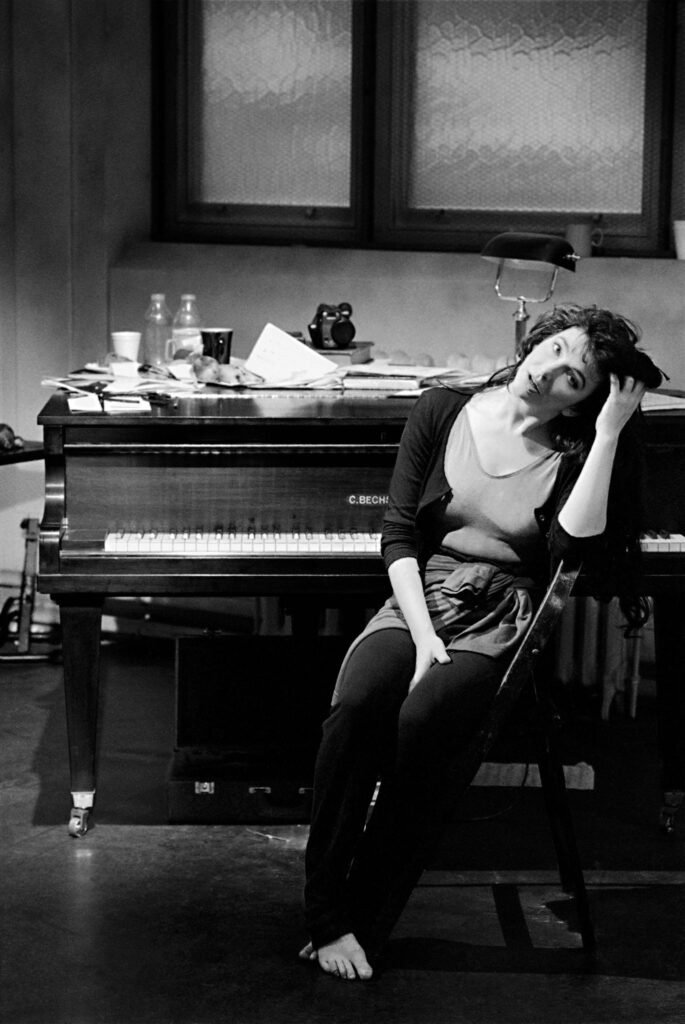
“The Red Shoes” holds a distinctive place within Kate Bush’s oeuvre and the broader landscape of pop and art rock, marking a period where the artist delved deeply into the exploration of personal and universal themes through a lens that was both introspective and boldly innovative. In the context of the early 1990s music industry, a period characterized by the rise of grunge and the ongoing evolution of electronic music, Bush’s album stands out for its commitment to emotional authenticity and musical craftsmanship. It neither strictly adheres to the established norms of its time nor does it alienate listeners with impenetrability; instead, it offers a bridge between the avant-garde and the accessible, pushing boundaries in a way that is uniquely Kate Bush.
Innovation in Production and Arrangement
One of the most innovative aspects of “The Red Shoes” is its production and arrangement. Bush’s hands-on approach to the album’s production allowed for a sound that is richly layered yet remarkably clear, blending traditional instrumentation with technological advancements in music production. The use of varied and sometimes unconventional instruments—combined with Bush’s experimental approach to vocal arrangements—creates a soundscape that is as diverse as the thematic content of the album itself. This blend of organic and synthetic, traditional and modern, contributes to the album’s fresh and distinctive sound.
Genre Blending and Thematic Exploration

Bush’s fearless genre blending is another area where “The Red Shoes” excels and innovates. By weaving together elements of pop, rock, folk, and even world music, Bush defies genre constraints, creating a sonic experience that is both eclectic and cohesive. This approach not only showcases Bush’s musical versatility but also serves the album’s thematic exploration, allowing for a richer, more nuanced expression of its core themes.
The thematic content of “The Red Shoes”—with its deep dive into the complexities of love, loss, and the creative process—also represents a significant contribution to the music industry. Bush’s willingness to explore such personal and profound subjects with honesty and depth is a testament to her artistic bravery. The album’s narrative strength, coupled with its emotional resonance, pushes the boundaries of what can be communicated through the medium of a pop album.
Legacy and Influence
“The Red Shoes” contributed significantly to the evolution of art pop, influencing a generation of musicians who seek to combine lyrical depth with musical innovation. Bush’s integration of diverse musical styles, along with her exploratory thematic approach, has inspired artists across the spectrum to pursue their creative visions without compromise. The album’s place within the music industry is not just as a work of art but as a beacon of artistic integrity and innovation.
Closing Thoughts
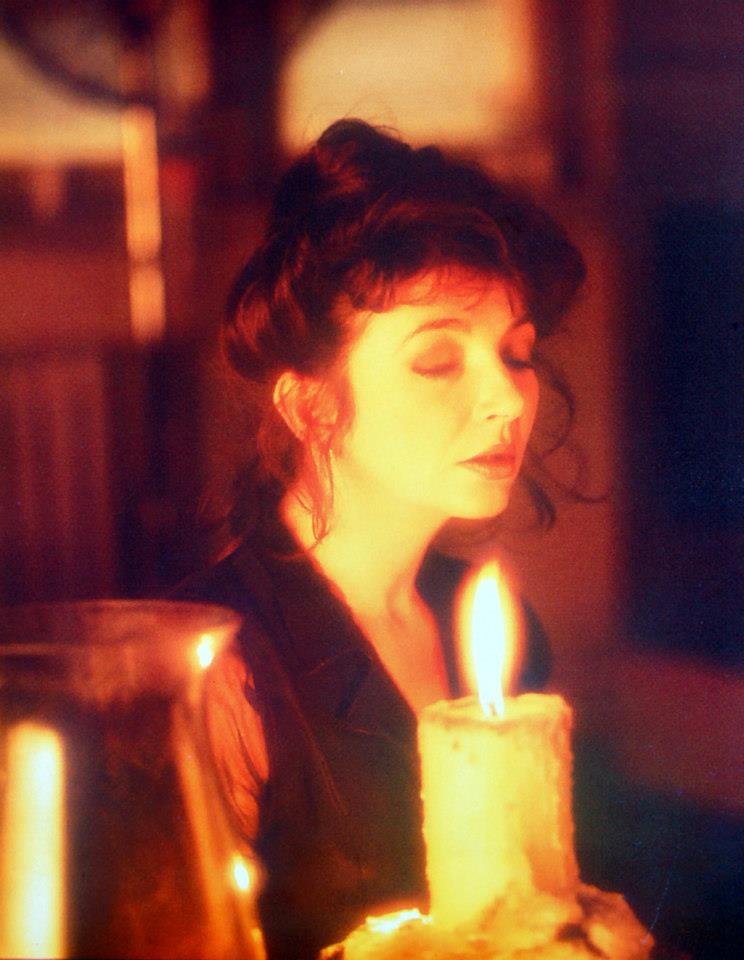
In conclusion, Kate Bush’s “The Red Shoes” is a compelling tapestry of emotional depth, musical innovation, and lyrical prowess that stands as a testament to Bush’s unyielding artistry and vision. The album’s strengths lie in its ability to blend diverse musical genres into a cohesive whole, its exploration of profound themes through both lyrics and music, and Bush’s unmistakable voice that serves as the guiding light through the varied emotional landscapes she crafts. The innovative production and arrangements ensure that “The Red Shoes” remains a sonically rich and engaging listen, while its thematic depth offers layers of meaning that reward repeated explorations.
Strengths & weaknesses
However, the album is not without its weaknesses. Some critics and listeners have argued that the ambitious scope of the album, with its wide-ranging musical influences and dense thematic content, can at times feel overwhelming, leading to moments where the cohesion Bush typically masters seems to fray. Additionally, while the genre blending is largely successful, it occasionally results in a lack of focus, with some tracks not reaching the emotional or musical heights of the album’s standout moments.
Despite these criticisms, “The Red Shoes” holds an important place in Kate Bush’s discography and the broader musical landscape. It showcases an artist at a crossroads, pushing her creative boundaries while reflecting on the personal and artistic challenges she has faced. This album, with all its complexities and idiosyncrasies, offers a unique listening experience that is both challenging and rewarding.
Official Rating
Given these considerations, a rating of 7 out of 10 for “The Red Shoes” is reflective of an album that, while not without fault, is a significant artistic achievement. The rating acknowledges the album’s ambitious scope and the high degree of skill and emotion with which Bush executes her vision. It is a work that may not resonate equally with all listeners but for those it does touch, it offers a profound and transformative experience.
